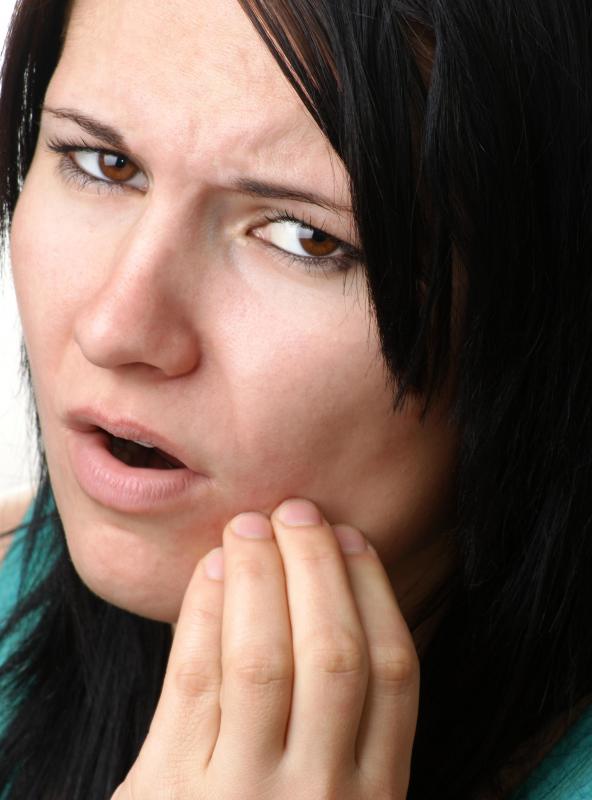At WiseGEEK, we're committed to delivering accurate, trustworthy information. Our expert-authored content is rigorously fact-checked and sourced from credible authorities. Discover how we uphold the highest standards in providing you with reliable knowledge.
What is the Lateral Pterygoid?
The lateral pterygoid, also known as the external pterygoid, is a muscle found in the facial region of the head. There is one lateral pterygoid muscle on each side of the face. These muscles work together to pull the mandible, or lower jawbone, forward as well as working to allow the mouth to open. The lateral pterygoid muscle is useful in the act of chewing and swallowing.
There are two heads of the lateral pterygoid muscle. The upper head begins at the sphenoid bone, which is located at the base of the skull. This upper head then inserts itself into the temporomandibular joint, more commonly known as the TMJ, located in the jaw. The lower head originates at the lateral pterygoid plate of the sphenoid bone and is inserted into a depression in the mandible known as the pterygoid fovea.

The fifth cranial nerve, also referred to as the trigeminal, is responsible for the nerve supply to the face, allowing for facial sensations. One of the branches of this nerve, known as the mandibular nerve, is responsible for supplying the lateral pterygoid muscle. The mandibular nerve provides the motor function portion of this cranial nerve.
The lateral pterygoid muscles work to lower, or depress, the mandible as well as to cause the jaw to open. These muscles also work together with the muscles known as medial pterygoids to move the jaw in a sideways motion. It is this action that makes chewing, otherwise known as mastication, possible. The lateral pterygoid muscle is the only muscle involved in the chewing process that functions to lower the jaw, although other muscles assist with the very beginning of this process.

The digastric muscle is one of the muscles assisting the lateral pterygoid. This muscle lies below the mandible and works to raise the hyoid bone, a bone that assists in movement of the tongue. The mylohyoid muscle is another supportive muscle, helping to raise the hyoid bone as well as the tongue, thus making actions such as speaking and swallowing possible. Yet another muscle that works along with the lateral pterygoid muscle is the geniohyoid muscle. This muscle helps to depress the mandible along with assisting in the digestive process.

While several conditions, including naturally occurring illness and traumatic injury, can damage the muscles of the face, the condition known as TMJ syndrome is primarily responsible for pain involving the pterygoid muscles. This condition causes facial pain as well as difficulty performing functions such as chewing or biting. TMJ syndrome is typically treated by a dentist. Treatment methods can include dental work or devices, medications, or, in severe cases, surgery.
AS FEATURED ON:
AS FEATURED ON:

















Discuss this Article
Post your comments